Course in chargeSushi Chef Course
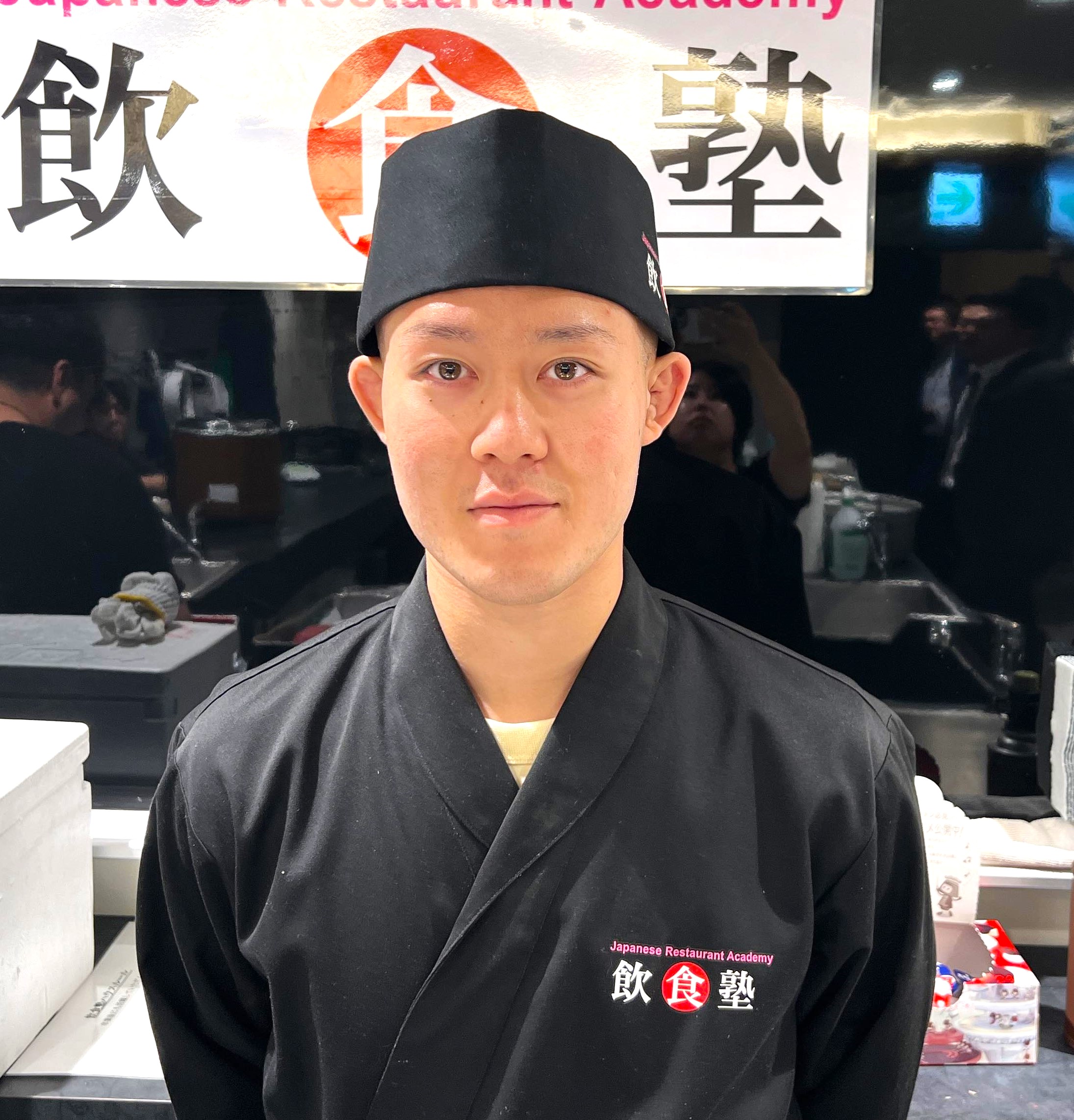
Biography
Since my childhood, I have been captivated by the attractiveness of sushi, and at 18 years old, I went into the sushi industry. At 22, I became independent in the field of sushi catering. Recognizing my skills and characteristics, I was invited to the homes of celebrities and participated in projects with influential YouTubers.
While running my own business, I also sought to learn the traditional Edo-style sushi at other sushi restaurants, devoting myself to learning through daily practice and dedication. My strength is not only in the technical expertise behind the scenes but also in the captivating artistry when I am in front of the customers.
What he values in undertaking lecturer at the Japanese Restaurant Academy
I approach each student with enthusiasm and passion, providing guidance that meets their individual needs and teaching practical skills.
I encourage students to foster their creativity and inspire them, providing an environment that supports their growth and development.
Message to those who are thinking about joining the school
This path is a continuous journey of challenges and efforts, but at the same time, it will bring a great sense of fulfillment and satisfaction.
At this school, you will have the opportunity to acquire comprehensive knowledge and skills, from the basics to advanced techniques of sushi making. You will learn various elements, such as Japan’s traditional sushi culture, cooking methods, selecting the finest seafood, and mastering the art of handling ingredients.
After enrollment, perticipate in your classes and training with focus and passion. The mastery of delicate techniques and adapting to a demanding environment require time and dedication, but through this process, you will grow and develop reliable skills.
Moreover, cherish the bonds with your peers. It is crucial to strive together with fellow students who share the same goals, supporting and helping each other. By encouraging and learning from one another, you can have a more fulfilling experience here.
Finally, embrace the courage and decisiveness to pursue your dreams, and enjoy your learning journey here. This invaluable experience will bring greatly benefit your future career. With confidence and a willingness to continue challenging yourself, you can embark on the path of becoming an exceptional sushi chef.
I sincerely support you and look forward to your wonderful learning and achievements here. Good luck!
Course in chargeYakitori Chef Course

Biography
He worked as a Japanese and kaiseki chef for 11 years at “Arima Grand Hotel” and “Japanese Cuisine Yugi” in Nakanobo Co. Based on this experience, he has been a cooking instructor of Yakitori, Japanese cuisine, and sushi for about 30 years at Kobe International Cooking and Confectionery College and University for Restaurants. He has experience managing Japanese and sushi restaurants.
He holds a chef’s license, a specialty in Japanese, sushi, and noodle cuisine, a poultry processing sanitation supervisor, and a blowfish license. In addition, he is also certified in Japanese cuisine dining etiquette, tea ceremony Urasenke, sencha-do, and flower arrangement Kofu-ryu.
What he values in undertaking lecturer at the Japanese Restaurant Academy
I will constantly intake new information and transmit the joy of cooking to those who have decided to develop their skills and knowledge to become a chef.
Message to those who are thinking about joining the school
Taking on a new challenge is a wonderful thing. We are here to help you realize your aspirations, goals, and dreams. We will guide you to become a successful chef through an intense experience and learning knife techniques, heat application, seasoning balance, knowledge, science, theory, and food culture. Have fun learning!
Course in chargeRamen Chef Course
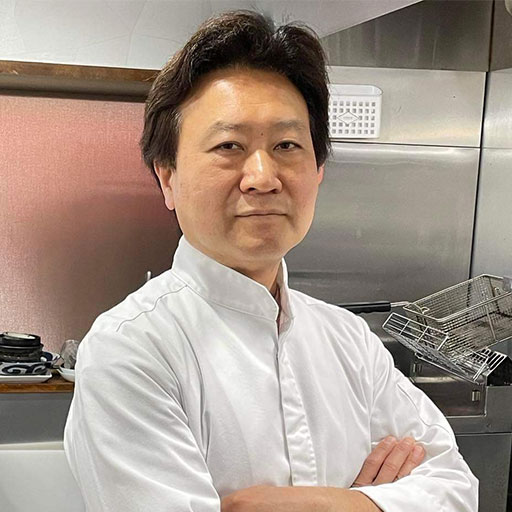
Biography
In 2001, he began a consulting business specializing in ramen, opening new ramen stores and rebuilding unprofitable ones. This activity was picked up by the mass media and led to the creation of the name “ramen producer”. Currently, he teaches at ramen schools in Tokyo, Yokohama, and Osaka, where he provides complete individualized instruction. He has trained more than 1,200 students in Japan and abroad. He has written numerous books on the subject and has made a media appearance.
What he values in undertaking lecturer at the Japanese Restaurant Academy
I hope that all participants in this course will not only aspire to become ramen chefs who can make ramen but also to become ramen store owners who can continue to thrive in the world. The greater your ambition, the more you will gain from this ‘place’.
Message to those who are thinking about joining the school
The ramen industry has an extremely high closure rate after opening a business compared to other food and beverage industries. One of the reasons for this is that many people enter the industry with easygoing ideas. Today, various ramen recipes can be found on the Internet and can be learned independently. But because of that, it is difficult to become a thriving ramen restaurant only with ramen-making skills. In this course, lessons will be conducted with an emphasis on how to survive as a ramen restaurant, not only domestically but also with oversight of overseas expansion. In the area of cooking techniques, each participant will develop the skills to create their product. In terms of management, by case-studying an actual ramen restaurant that closed, participants will learn from the essence of that failure the thinking and methodology necessary for the future management of ramen restaurants.
Course in chargeSushi Chef Course
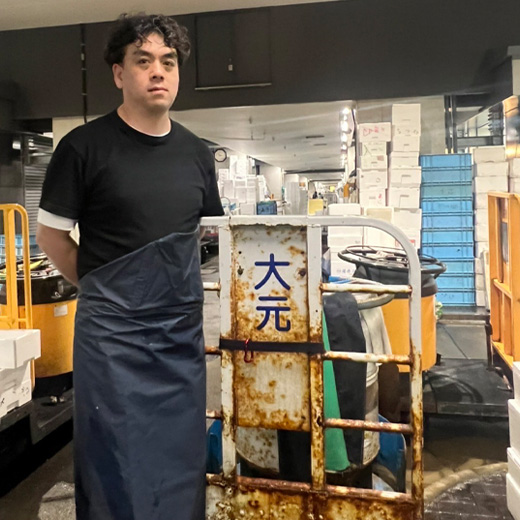
Biography
Worked at the market (Ota Market Fisheries for 3 years, mainly dealing with tuna at Tsukiji Market).
After the decision was made to open the Toyosu Market, he was put in charge of the processing room and introduced the Tsumoto style. He became the first Tsumoto-style certified engineer for the Toyosu Market, and is currently a 3-star Engineer*.
In May 2022, he will start a corporation while working at the market and begin guiding companies and stores outside the market.
Currently, in addition to his wholesaling duties in the market, he also teaches blood removal, fastening, and transport methods at aquaculture farms, Tsumoto-style techniques at fisheries technology centers and fish processing plants, and fish handling methods at restaurants.
What he values in undertaking lecturer at the Japanese Restaurant Academy
I will teach the technique of removing blood using the Tsumoto style and how to maintain freshness, and pass on the knowledge that will be useful for future restaurant management.
Message to those who are thinking about joining the school
By learning the Tsumoto style, we shall understand the structure of fish and the potential that fish have.
*Tsuhon style has 2-star and 3-star certification exams according to technical skills.
There are currently six certified technicians in the country with three stars.
You also have the opportunity to hear about the latest trends in the restaurants industry from the chefs from the renowned yakitori specialty restaurant ‘Nakameguro Iguchi,’ which constantly introduced new concepts and has been featured in various gourmet magazines,to ‘Komeru,’ a Japanese restaurant with a reputation for its rice-centric course dishes and frequented by many celebrities, you can gain insights into the current state of the culinary world.
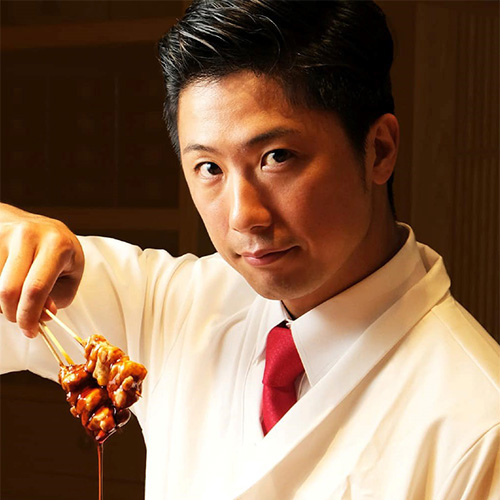
General Manager
Toru Toriumi
After completing my apprenticeship at a teppanyaki restaurant in Tokyo, I decided to further refine my skills by joining “Nakameguro Iguchi.” In addition to being the head chef at the Ebisu branch, I have also gained management experience at various Japanese and Italian cuisine affiliated establishments. Currently, I hold the position of General Manager at “Nakameguro Iguchi.”
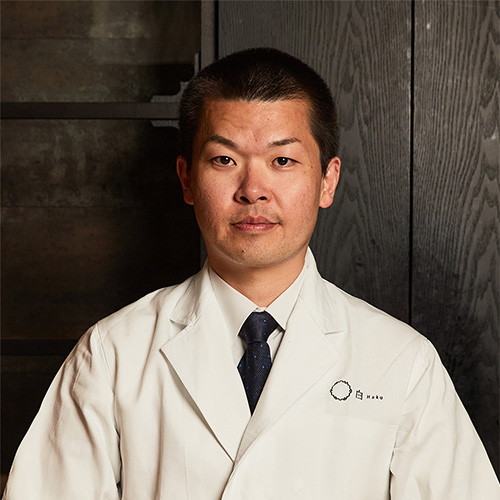
General Manager
Masaru Shirakawa
After training at renowned establishments such as traditional Japanese restaurants and hotels in Tokyo, I honed my skills at a Michelin two-star restaurant, gaining expertise in Kyoto cuisine. I then served as the head chef at “Azabu-Juban Komeru” and currently hold the position of General Manager for the same brand.